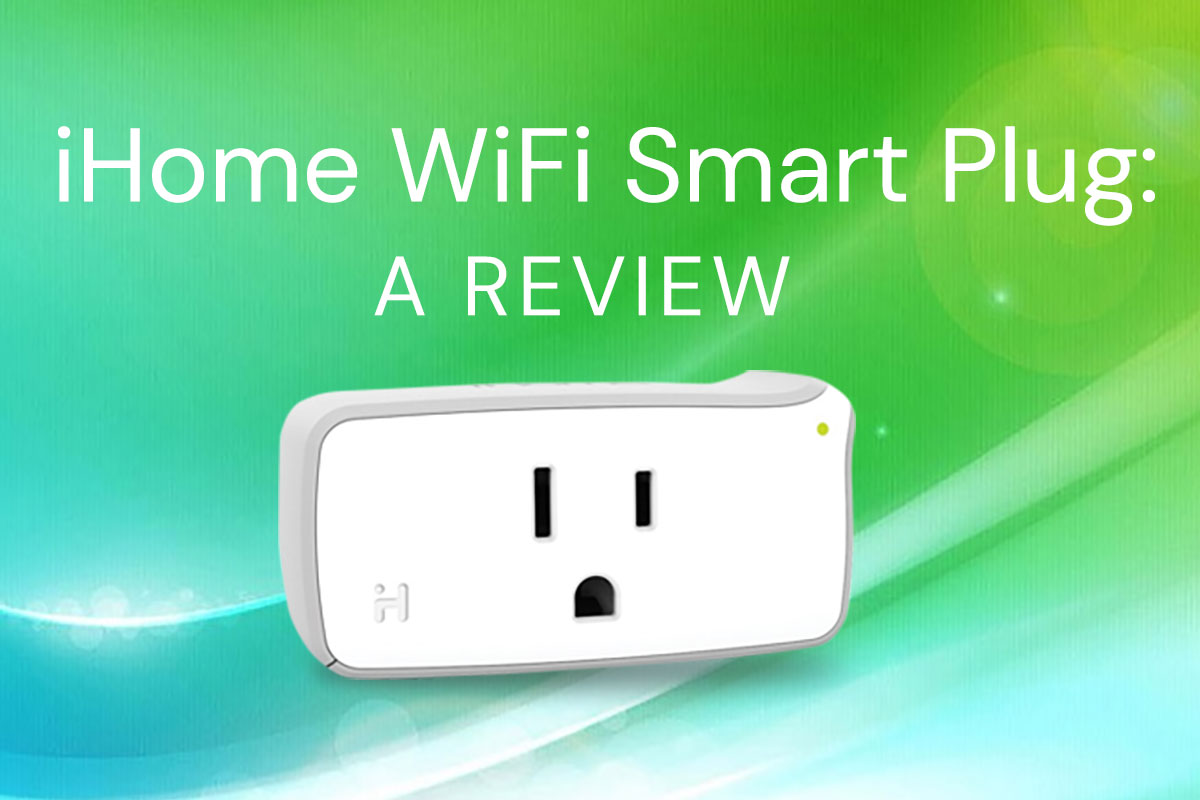The iHome iSP5 is a small-profile device that plugs into an existing electrical outlet and allows it to be controlled via WiFi. We chose it because of its low cost (approximately $35), and because it works with the Wink app and hub, which we already use for home automation. (Many users have chosen to use it with Apple HomeKit, but reviews of integration with HomeKit are pretty unenthusiastic.) It is small enough that it doesn’t block the other outlet, so two could be plugged into one outlet if necessary. It’s also a little easier and less permanent than switching out the outlet with a Z-Wave outlet, which would also be compatible with Wink and other home automation systems. With such a device, you can control lamps, space heaters, air conditioners, fans, holiday lighting—up to 1800 Watts per plug. Ideally, anyway. The reviews on Amazon were fairly negative, with only a few users who seemed to be pleased with it. Several reviews indicated that a recent update might have fixed some issues, so we went ahead with the order. (One reviewer indicated that the devices do not work with enterprise WiFi networks and thus are not usable in corporate environments or colleges.)
As you might expect from a product with the prefix “i,” the iHome iSP5 is meant to be operated in an iOS environment. We began setup on an iPad with the ultimate goal of controlling it via our existing Wink app, so that all the lights in a particular room could be shut off with one command. (A voice command delivered to an Amazon Echo, no less.) To begin setup, we had to download the iHome Control app to our iPad—and admittedly, we found it a bit annoying that we had to download a separate app instead of just pairing it with the Wink app. Setup inside the iHome app was fairly simple. We created a “Room,” physically reset the iHome outlet by pressing a button, added a device and its unique key provided on a card that came with the outlet, and connected it to our WiFi network. After that we were able to see the iHome outlet in the Wink app. For one brief shining moment, it all worked.
And then we made a few other changes in the Internet of Things, and then it didn’t work. And we weren’t sure why. And then it started to “magically” work again. Readers, there is no magic in the Internet of Things. When something starts working again for no apparent reason, that is not a good thing. After all, you wouldn’t want a space heater plugged into a smart outlet to start working again if you were expecting it not to—particularly if you were out of town and happened to leave something flammable nearby.
We deleted the iHome app and went through the setup process again. We tried resetting the router and going through the whole setup process again. We tried calling iHome’s tech support, who had us do exactly what we just did again. A weird symptom that we couldn’t diagnose cropped up: the iPad would lose WiFi connectivity when we tried to use the iHome app. iHome tech support told us that the iSP5 did not send out any WiFi signals; it just receives them, so it’s not that the outlet itself is interfering with WiFi. Again according to tech support, the iHome app “should not” be interfering with the iPad’s WiFi connection, but each time we deleted the app, the the issue would go away. Without knowing more about the app’s permissions, we couldn’t tell you if this is just a coincidence or if it’s definitively related to the app. As far as we’ve been able to determine, we’re the only users documenting this issue online.
Amazon reviews indicated that the iHome app is only compatible with certain Jellybean iterations of the Android OS, and indeed we were disappointed to find that when we downloaded the app on an Android phone, it did not work at all. It crashed as soon as it was opened.
Tech support was fairly helpful, though we think that iHome’s support department must be quite small. We talked to the same agent twice. At the end of our second 45-minute call with no success connecting the plug to the iHome app, she advised that we return it to Amazon for an exchange. We intend to return it instead, as there were too many disadvantages to the product to warrant more time tinkering with it.
This just goes to show that not all smart home devices are where they need to be. Though technologies like X-10 have been around since the 1970s, the smart home movement is only now picking up speed and becoming more accessible for everyday users. Want to talk home automation, or technology in general? Contact us or leave us a comment!






